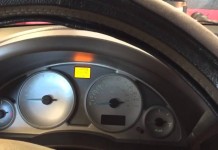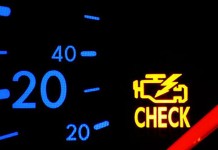Depending on where you live, your car may not be drivable if your air conditioning system isn’t up to par. There are a lot of different components that work together to get that cold air blowing in your face. So before we dive into diagnosing your air conditioning, you must first understand how the system and all its components work.
The Freon
Freon is the gas that is used as refrigerant in your ac system. The refrigerant changes back and forth from a liquid to a gas changing the temperature depending on its state. To control the state of the gas, the system uses a couple of devices like your compressor or the expansion device. There is a high-pressure side and a low-pressure side of the system that are separated by these devices. The system together regulates the pressures and state of the freon which determines the temperature of the air delivered out of your vents.
The Operation
We will start at the compressor. This is where the freon is compressed into a high-pressure gas and then sent to the condenser. The condenser looks like, and is in the same area as the radiator, and simply serves the same purpose. It’s job is to cool down the gas and lower the pressure as it continues to flow to the receiver drier. By the time the freon has reached the drier, it has turned from a high-pressure gas to a high-pressure liquid. As the freon continues its cycle and reaches the expansion device, it again changes state from a high-pressure liquid to a low-pressure liquid. The low-pressure liquid state is the coldest state for the freon coming in around 30-40 degrees depending on the ambient temperature. This is where the freon makes its way through the evaporator. The evaporator is located in the dash along with your heater core and blower fan. The evaporator box houses these 3 components. There are also a number of doors and actuators that open and close that direct the airflow and temperature to your desired position in the cabin. The freon leaves the evaporator as a low-pressure gas and is sucked back into the compressor to start the process all over again.
As the freon moves through this cycle, it pushes the oil through the system as well. Imagine the AC compressor as a tiny engine that works similarly to the engine that runs your car. It needs to stay lubricated to maintain functionality. When the system is low on freon, it doesn’t circulate the oil as well, which will cause the compressor to be deprived of lubrication which lowers the lifespan of the unit significantly.
What is the problem
Now, just because your AC isn’t blowing cold, that does not mean that you just need to have your vehicle recharged. AC systems are a sealed system. Freon does not depleted itself. It does not evaporate. It does not go away except for when there is a leak in the system. Also, at each point in the system mentioned above, there’s a specified pressure range that the AC system should be operating at. If for any reason those pressures are not where they are supposed to be, it will cause the same symptoms as being low on freon and not deliver cold air out of your vents. Also, most newer vehicles have a PMW valve that is electronically controlled by an ECU that regulates compression that control that pressure too. Lastly, you could have a blend door issue where your evaporator box is not delivering just cold air because the blend door is stuck or the actuator has malfunctioned. Instead you were getting a mixture of cold air and hot air, even though the freon system is working perfectly.
So how do you know where to start looking for your problem?



















